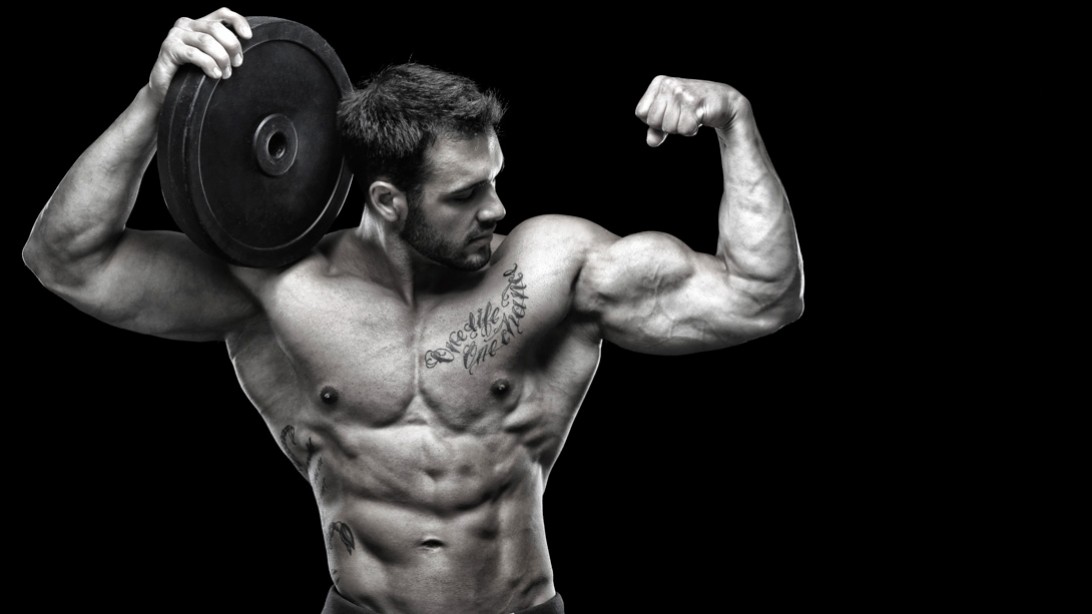The Story Of Bodybuilding

Bodybuilding is the use of progressive resistance exercise to control and develop one's musculature.[1] An individual who engages in this activity is referred to as a bodybuilder. In professional bodybuilding, bodybuilders appear in lineups and perform specified poses (and later individual posing routines) for a panel of judges who rank the competitors based on criteria such as symmetry, muscularity, and conditioning. Bodybuilders prepare for competitions through a combination of intentional dehydration, elimination of nonessential body fat, and carbohydrate loading to achieve maximum vascularity, as well as tanning to accentuate muscular definition. The winner of the annual IFBB Mr. Olympia contest is generally recognized as the world's top male professional bodybuilder. The title is currently held by Phil Heath, who has won every year from 2011 to 2016. The winner of the Women's Physique portion of the competition is widely regarded as the world's top female professional bodybuilder. The title is currently held by Juliana Malacarne, who has won every year since 2014. Since 1950, the NABBA Universe Championships have been considered the top amateur bodybuilding contests, with notable winners such as Reg Park, Lee Priest, Steve Reeves, and Arnold Schwarzenegger.
Eugen Sandow
Bodybuilding developed in the late 19th century, promoted in England by German Eugen Sandow, now called the "Father of Modern Bodybuilding". He allowed audiences to enjoy viewing his physique in "muscle display performances". Although audiences were thrilled to see a well-developed physique, the men simply displayed their bodies as part of strength demonstrations or wrestling matches. Sandow had a stage show built around these displays through his manager, Florenz Ziegfeld. The Oscar-winning 1936 musical film The Great Ziegfeld depicts this beginning of modern bodybuilding, when Sandow began to display his body for carnivals. Sandow was so successful at flexing and posing his physique that he later created several businesses around his fame, and was among the first to market products branded with his name. He was credited with inventing and selling the first exercise equipment for the masses: machined dumbbells, spring pulleys, and tension bands. Even his image was sold by the thousands in "cabinet cards" and other prints. Sandow was a perfect "gracilian", a standard of ideal body proportions close to those of ancient Greek and Roman statues. Men were judged by how closely they matched these proportions.
First large-scale bodybuilding competition
Sandow organised the first bodybuilding contest on September 14, 1901, called the "Great Competition". It was held at the Royal Albert Hall in London. Judged by Sandow, Sir Charles Lawes, and Sir Arthur Conan Doyle, the contest was a great success and many bodybuilding enthusiasts were turned away due to the overwhelming amount of audience members.[3] The trophy presented to the winner was a gold statue of Sandow sculpted by Frederick Pomeroy. The winner was William L. Murray of Nottingham. The silver Sandow trophy was presented to second-place winner D. Cooper. The bronze Sandow trophy, now the most famous of all, was presented to third-place winner A.C. Smythe. In 1950, this same bronze trophy was presented to Steve Reeves for winning the inaugural NABBA Mr. Universe. It would not resurface again until 1977, when the winner of the IFBB Mr. Olympia contest, Frank Zane, was presented with the bronze trophy, or at least a replica of it. Since then, Mr. Olympia winners have been awarded a replica of the bronze trophy.
On January 16, 1904, the first large-scale bodybuilding competition in America took place at Madison Square Garden in New York City. The competition was promoted by Bernarr Macfadden, the father of physical culture and publisher of the original bodybuilding magazines such as Health & Strength. The winner was Al Treloar, who was declared "The Most Perfectly Developed Man in the World".[4] Treloar won a $1,000 cash prize, a substantial sum at that time. Two weeks later, Thomas Edison made a film of Treloar's posing routine. Edison had also made two films of Sandow a few years before. Those were the first three motion pictures featuring a bodybuilder. In the early 20th century, Macfadden and Charles Atlas continued to promote bodybuilding across the world. Alois P. Swoboda was an early pioneer in America.
Notable early bodybuilders